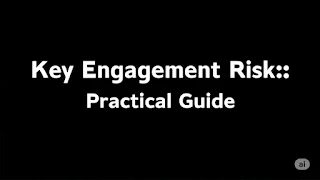How Auditors Identify, Assess & Respond to Risk: Practical Guide
Overview: A critical part of any audit is identifying, assessing, and responding to risks of material misstatement (RMM). This guide breaks down how auditors evaluate risk at both the financial statement and assertion level, determine significant risks, and tailor responses using NET (Nature, Extent, Timing).
✅ Identifying and Assessing Risks
- Financial Statement Level Risks: These affect the entire financial statements (e.g., weak internal control, lack of qualified staff, poor accounting estimates).
- Assertion Level Risks: Specific to transactions, balances, or disclosures. The auditor assesses inherent and control risk for each relevant assertion.
📌 Significant Risks
A significant risk has inherent risk near the upper end of the spectrum — think fraud risk, related party transactions, improper revenue recognition, or complex estimates. Always focus on inherent risk alone, ignoring controls for this determination.
✅ Assessing Risks: Key Steps
- What could go wrong?
- Significance and likelihood of misstatement.
- Is testing controls required because substantive alone won’t suffice?
- Does the risk affect specific assertions or the FS as a whole?
✅ Documenting Risk Assessments
- Team discussions about susceptibility to misstatement.
- Understanding the entity and its internal controls.
- Identified significant risks, assertions, and judgments made.
✅ PCAOB Guidance for Issuers
Issuers must identify significant accounts/disclosures and their relevant assertions, assessing both qualitative and quantitative factors. Risks at multi-location companies should be assessed by location and rolled up to consolidated FS level.
✅ Responding to Assessed Risks
- Overall FS-Level Response: E.g., increase skepticism, adjust staff skill level, add unpredictability, adjust strategy or timing.
- Assertion-Level Response: Tailor nature, extent, and timing (NET) of audit procedures. The higher the risk, the more persuasive evidence must be.
✅ NET: Nature, Extent, Timing
- Nature: Type of procedure (test of control vs. substantive; inquiry, observation, inspection, recalculation).
- Extent: Quantity of procedures — higher risk → larger samples.
- Timing: When procedures are performed — high risk → closer to period-end.
✅ Tests of Controls vs. Substantive Procedures
- Tests of controls evaluate operating effectiveness. Required when relying on controls or when substantive alone isn’t enough (e.g., highly automated environments).
- Substantive procedures detect misstatements. Always required for each significant assertion.
- Dual-purpose tests combine tests of controls + details for efficiency.
✅ Responding to Significant Risks
- Evaluate design and implementation of related controls.
- Perform substantive tests linked to the risk.
- Communicate significant risks to governance.
🔗 Helpful References
👉 Identify, assess, and respond smarter — every audit, every time!

